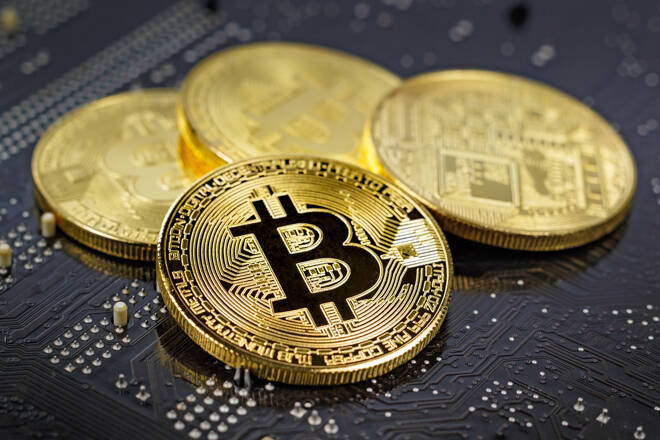Advertisement
Advertisement
Bitcoin Celebrates Bitcoin Pizza Day on May 22 with a Return to $30,000
By:
On May 22, 2010, Laszlo Hanyecz purchased two Papa John's pizzas for 10,000 BTC. In commemoration, the crypto market labelled the day Bitcoin Pizza Day.
Key Insights:
- On May 22, 2010, bitcoin advocate and software programmer Laszlo Hanyecz purchased two pizzas using bitcoin in a landmark transaction.
- Satoshi Nakamoto’s wish may not have come true, but bitcoin and blockchain technology may have grown far beyond anything Satoshi could have imagined.
- Today, bitcoin sits at $30,000, with a market cap of $579 billion.
On May 22, 2010, Bitcoin Pizza Day, two bitcoin enthusiasts negotiated the purchase and the delivery of two Papa John’s pizzas in exchange for Bitcoin. Laszlo Hanyecz paid 10,000 Bitcoin for the delivery of the two pizzas to his home.
Twelve years ago, software engineer Laszlo Hanyecz took to bitcointalk to find another bitcoin enthusiast willing to accept bitcoin to make and deliver or order and deliver two pizzas to his house.
After several days and a number of bitcointalk users showing interest, Laszlo announced on May 22, 2010, the trade of 10,000 bitcoins for pizza. In today’s terms, two pizzas cost Laszlo $300 million.
Bitcoin Pizza Day is a big day in the crypto calendar, and since the early days of bitcointalk, the evolution of bitcoin and the crypto market has been immense.
The adoption and the advancement of bitcoin and the crypto market required outside-of-the-box thinkers, however.
Bitcoin Adoption Came Despite an Illiquid Market
In November 2012, WordPress reportedly became the first global company to accept bitcoin for payments. WordPress partnered with BitPay to allow customers to use bitcoin to pay for upgrades.
Bitcoin stood at $10.57 as of November 1.
More significantly, WordPress paved the way for the adoption of bitcoin over the years. Today, bitcoin is widely accepted globally, with BitPay still a gateway between fiat and crypto.
Politicians, fast food chains, luxury fashion brands, the travel industry, and sports franchises and players are among the ever-increasing number of industries and people of influence that now accept bitcoin as payment.
It took a lot of good faith for the trailblazers, however. The early days of bitcoin were associated more closely with the Wild West than a viable alternative to fiat.
Cybercrime and Anonymity Slowed Progress in the Early Days
In terms of adoption, the real world was slow to embrace blockchain technology and bitcoin as an alternative means of payment.
News of hacks, Ponzi schemes, and bitcoin’s use in criminal activity left bitcoin on the sidelines.
In 2014, Mt Gox lost half a billion dollars of customer money. The hack led to the collapse of the exchange and bitcoin itself.
In response to the news, bitcoin slumped from a month high of $829 to a low of $100.
Since Mt. Gox, crypto exchanges have evolved with a far greater emphasis on security. In the early days, users could trade bitcoin anonymously. Anonymity harbored the use of bitcoin in criminal activity. Exchanges were also more exposed to illegal activity.
Regulatory scrutiny and the implementation of anti-money laundering and KYC checks made bitcoin and the broader crypto market more acceptable to the mainstream.
From Decentralized to Centralized to Global
The influence of governments on cryptos, however, created an asset class more comparable to FX and equities.
While Satoshi Nakamoto may have wished for bitcoin to be free from the influence of governments, the evolution to a more transparent crypto market also supported the more rapid adoption of bitcoin and growth in the crypto market.
Today, bitcoin sits at $30,000 levels, down more than 50% from a November 2021 all-time high of $68,979.
Unlike before, however, the talk of bubbles and tulips has gone. Bitcoin and blockchain technology are mainstream, thanks to the early pioneers and Laszlo’s pizza purchase.
For this very reason, Bitcoin Pizza Day will be forever etched into the crypto calendar.
And for Satoshi Nakamoto, one consolation will be that governments could not only bring down bitcoin but eventually embrace the technology and bitcoin itself.
About the Author
Bob Masonauthor
With over 28 years of experience in the financial industry, Bob has worked with various global rating agencies and multinational banks. Currently he is covering currencies, commodities, alternative asset classes and global equities, focusing mostly on European and Asian markets.
Did you find this article useful?
Latest news and analysis
Advertisement
